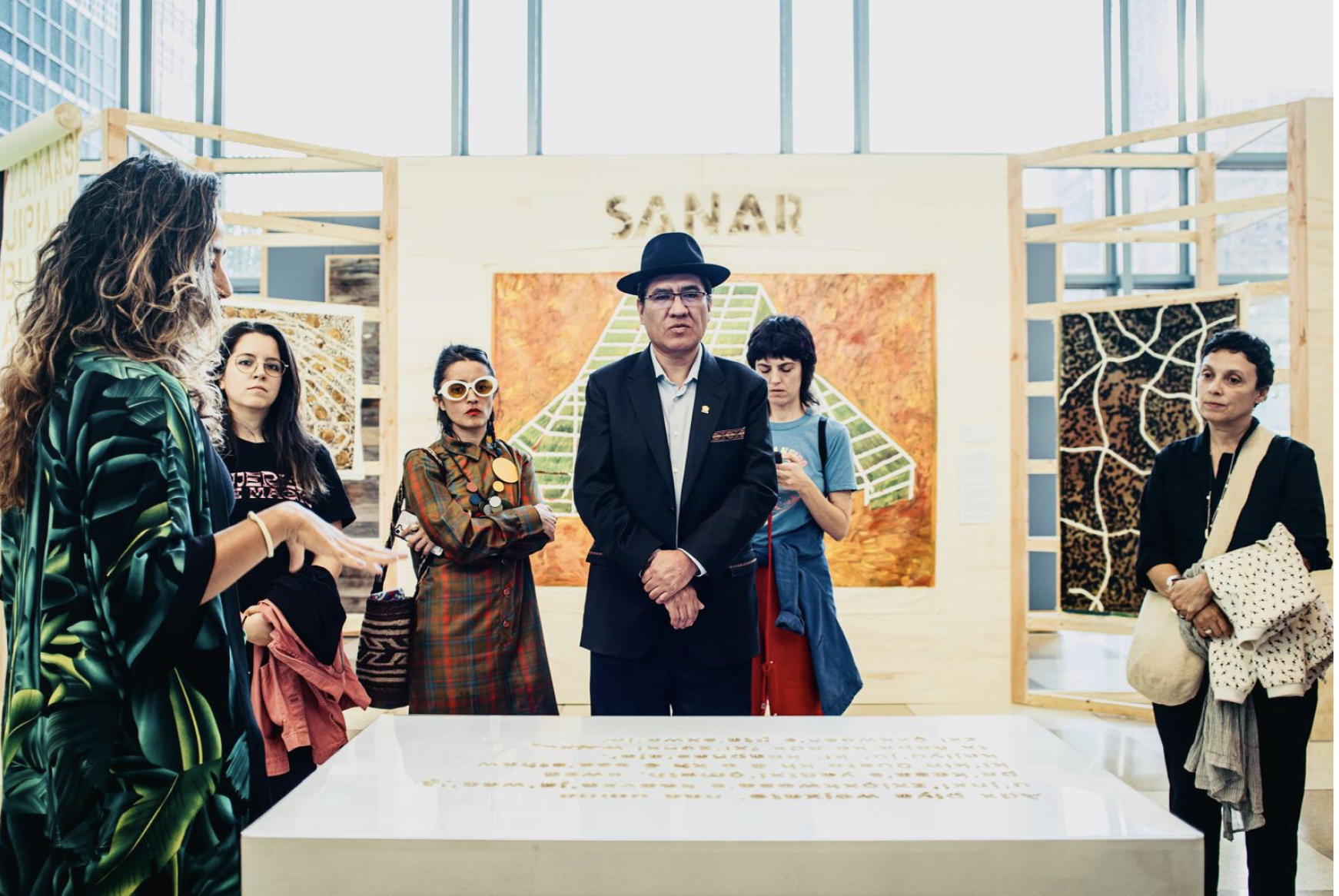


Coca, Palabra-Mundo at the UN. /Photos: Mariana Reyes, Alejandro Neira y Alejandro Jaramillo ︎︎︎
This curatorial research project seeks to highlight the coca plant's mystical, political, medicinal, and nutritional value through contemporary art.
COCA, PALABRA-MUNDO AT THE UN
Curators: Liana, a curatorial research collective formed by Colombian artists and researchers Angélica Cuevas (Medellín, 1988), Juan Pablo Caicedo Torres (Bogotá, 1991) and Giselly Mejía (Támesis, 1990).
Artists: Tatiana Arocha, Pajarita Caucana (Daniela Rubio, Maria Alejandra Torres and Mónica Suárez), Aimema Uai, Sandra Díaz, Andrés Domínguez, Estefanía García Pineda, Miguel Ángel Rojas, Edinson Quiñones, Anyi Ballesteros (Agroarte), NOMASMETAFORAS (Julián Dupont and Clara Melniczuk) with Consejo de Mayores del Territorio Ancestral Kweth Kina & Consejo de Mayores UAIIN-CRIC, Ximena Garrido-Lecca, and Ricardo Cortés.
My role: Curator, researcher, educator, strategic communicator, and producer.
Language: Spanish and English.
Year: November, 2024
![]()
Curators: Liana, a curatorial research collective formed by Colombian artists and researchers Angélica Cuevas (Medellín, 1988), Juan Pablo Caicedo Torres (Bogotá, 1991) and Giselly Mejía (Támesis, 1990).
Artists: Tatiana Arocha, Pajarita Caucana (Daniela Rubio, Maria Alejandra Torres and Mónica Suárez), Aimema Uai, Sandra Díaz, Andrés Domínguez, Estefanía García Pineda, Miguel Ángel Rojas, Edinson Quiñones, Anyi Ballesteros (Agroarte), NOMASMETAFORAS (Julián Dupont and Clara Melniczuk) with Consejo de Mayores del Territorio Ancestral Kweth Kina & Consejo de Mayores UAIIN-CRIC, Ximena Garrido-Lecca, and Ricardo Cortés.
My role: Curator, researcher, educator, strategic communicator, and producer.
Language: Spanish and English.
Year: November, 2024
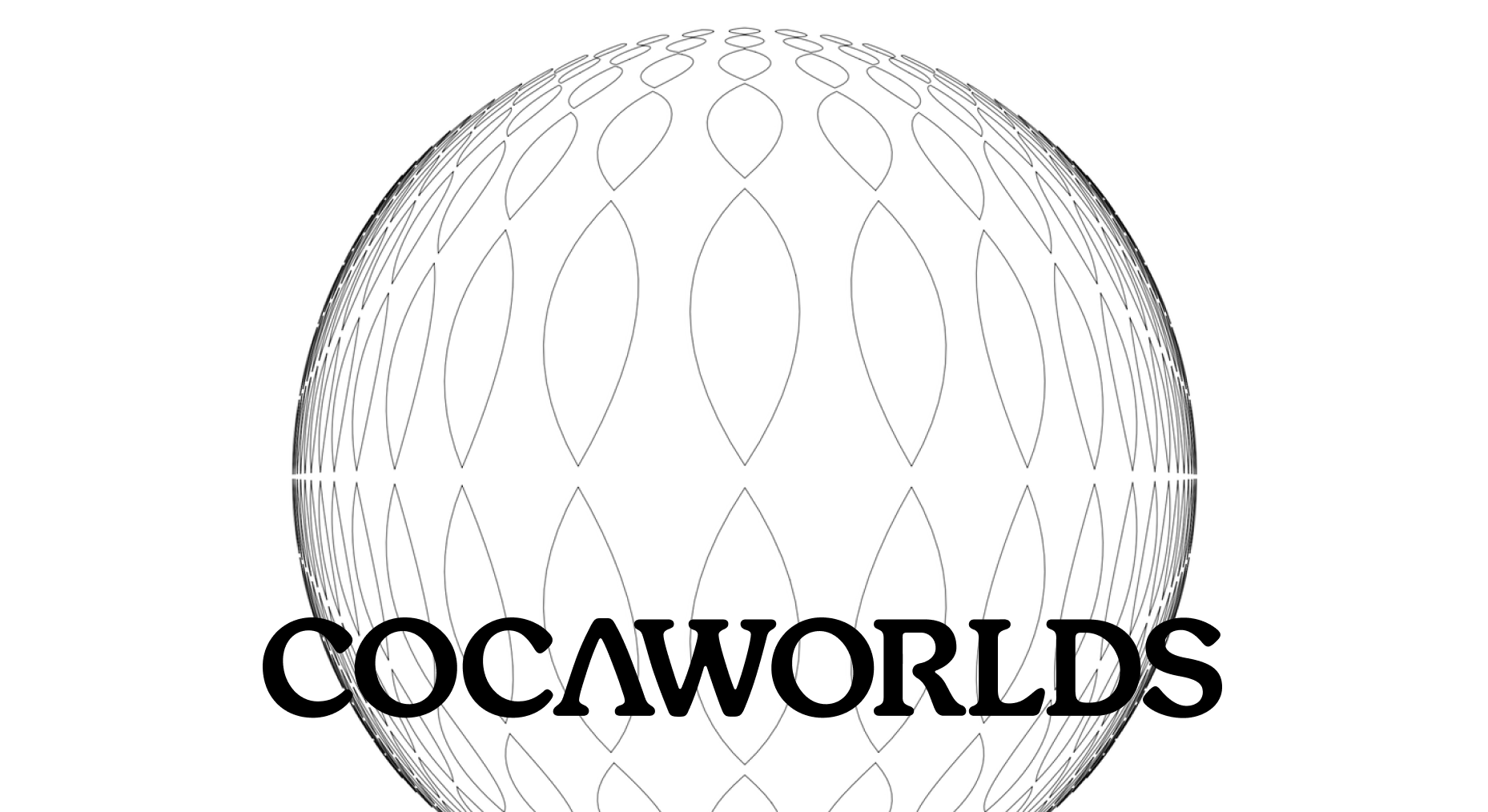
In the summer of 2024, we decided to work with the Government of Colombia on the realization of Coca, Palabra-Mundo, an exhibition co-sponsored by the Mission of Bolivia to the United Nations and financed by the Open Society Foundations. The exhibition was held at the United Nations Headquarters in New York from November 3 to 8, 2024.
The show invited the international community to reflect on the benefits of the coca plant for Indigenous and peasant communities and to question the historical mistake made by the United Nations in 1961 when it classified coca as a narcotic.
For over 8,000 years, the coca leaf has been an integral part of the life and cultures of Indigenous and peasant communities in the Andean-Amazonian region. However, this sacred plant has been stigmatized and criminalized internationally by being equated with cocaine. The 1961 Single Convention on Narcotic Drugs listed the coca leaf as a narcotic, which led to decades of public policies focused on persecuting both the plant and the communities that rely on it. This historical and colonial error has caused immense harm to millions of people, fragmented entire communities, and resulted in irreversible environmental damage.
Coca, Palabra-Mundo sought to challenge and shift the negative perceptions surrounding coca, reclaiming the right of Indigenous and peasant communities to use this sacred plant. More than a symbol of life, health, and spirituality, coca is a profound source of identity, knowledge, and connection for millions in South America. The exhibition invited visitors to reflect on the historical biases that have demonized coca and highlighted the urgent need to correct a deeply entrenched misunderstanding with far-reaching consequences.
The exhibition featured the work of eight artists, many of whom were born or work in regions where coca cultivation is integral to the local culture and economy. Their pieces offer both ancestral and contemporary perspectives, shaped by their personal histories and the experiences of the Indigenous communities with whom they are connected. In these works, coca is portrayed as a being with agency—an element that facilitates communication, political organization, and harmony within communities and territories.
The show invited the international community to reflect on the benefits of the coca plant for Indigenous and peasant communities and to question the historical mistake made by the United Nations in 1961 when it classified coca as a narcotic.
For over 8,000 years, the coca leaf has been an integral part of the life and cultures of Indigenous and peasant communities in the Andean-Amazonian region. However, this sacred plant has been stigmatized and criminalized internationally by being equated with cocaine. The 1961 Single Convention on Narcotic Drugs listed the coca leaf as a narcotic, which led to decades of public policies focused on persecuting both the plant and the communities that rely on it. This historical and colonial error has caused immense harm to millions of people, fragmented entire communities, and resulted in irreversible environmental damage.
Coca, Palabra-Mundo sought to challenge and shift the negative perceptions surrounding coca, reclaiming the right of Indigenous and peasant communities to use this sacred plant. More than a symbol of life, health, and spirituality, coca is a profound source of identity, knowledge, and connection for millions in South America. The exhibition invited visitors to reflect on the historical biases that have demonized coca and highlighted the urgent need to correct a deeply entrenched misunderstanding with far-reaching consequences.
The exhibition featured the work of eight artists, many of whom were born or work in regions where coca cultivation is integral to the local culture and economy. Their pieces offer both ancestral and contemporary perspectives, shaped by their personal histories and the experiences of the Indigenous communities with whom they are connected. In these works, coca is portrayed as a being with agency—an element that facilitates communication, political organization, and harmony within communities and territories.










Coca, Palabra-Mundo at the UN. /Photos: Mariana Reyes, Alejandro Neira y Alejandro Jaramillo ︎︎︎
Public Programming:
- Guided Tours at the United Nations:
A bilingual (Spanish and English) tour led by the curators, offering deeper insights into the themes of the exhibition and the significance of coca. - Panel Discussion at the UN: Beyond Declassification – Detoxifying Narratives Around the Coca Plant:
A conversation to challenge the hegemonic negative connotations associated with coca, which have persisted for decades due to misinformation and prejudice, and continue to fuel violence and injustice across South America. - Dialogue with Colombian Artists – Art, Coca, and Drug Policies:
A discussion with Colombian artists who use the coca leaf as a medium to transform drug policies and reshape the narratives surrounding drugs. - Screening – Coca Vision:
A screening of a photographic series and two video art pieces created by artists featured in the exhibition. The screening was followed by a conversation reflecting on the themes and concepts explored in their works. - Coca Watercolor Workshop: Tinta Dulce – Poetics of the Future:
A hands-on watercolor workshop using coca-based inks, led by the Colombian collective Ginger Blonde and curator Giselly Mejía. This workshop invited participants to imagine and illustrate potential futures for the coca plant, exploring its cultural significance and transformative potential.
After its presentation at the United Nations, the exhibition was hosted at the Open Society Foundations headquarters in New York from November 11, 2024, to January 15, 2025.
Press:
- El Espectador Newspaper: Colombia se toma sede de Naciones Unidas para quitarle el estigma a la hoja de coca
- La Silla Vacía: DESESTIGMATIZAR LA COCA DESDE LAS NACIONES UNIDAS - La Silla Vacía
- La Tempestad Magazine - México | DESINTOXICAR LA NARRATIVA DE LA COCA
- Galería La Cometa: Coca, word-world: an exhibition to vindicate the sacred, political and cultural value of the coca plant
- Ministry of Culture - Colombia: Exposición en Naciones Unidas reivindica los usos tradicionales, el valor científico y la importancia espiritual la hoja de coca
- Colombian Presidency: Colombia presenta exposición en Naciones Unidas en Nueva York para reivindicar el valor sagrado, político y cultural de la planta de coca


ESCR-Net New Visual Identity /Images: Le Apéritif ︎︎︎
We designers and communicators worked together to create a new visual identity that strengthens ESCR-Net's ability to communicate its mission to promote human and environmental rights.
ESCR-Net Rebranding
Design Studio:
Le Apéritif
Strategic Communicators: -Angélica Cuevas and Esther de la Rosa
Languages: Spanish, French, Arabic and English.
Year: 2024
![]()
Design Studio:
Le Apéritif
Strategic Communicators: -Angélica Cuevas and Esther de la Rosa
Languages: Spanish, French, Arabic and English.
Year: 2024

As the Communications Coordinator for the International Network for Economic, Social, and Cultural Rights (ESCR-Net), I proposed and led the rebranding of an organization that unites 300 social movements, human rights organizations, and advocates from 80 countries, collaborating to build coalitions, inform decisions, and shape structures that ensure human rights.
This was the first time the organization had undertaken such a project, resulting in a new, more powerful way of communicating better aligned with the NGO's mission.
This is a high-impact project, as it not only changed the external perception of how the network communicates, but also transformed the staff's perception of how ESCR-Net can innovate in its approach to communicating human rights. The redesign was commissioned to Le Apéritif Studio (Spain), and together with them and the Communications Director of the Network, we conducted internal workshops to produce the new voice and branding briefing documents that informed the process of conceptualizing this powerful new visual identity.
Le Apéritif decided to create a flexible visual identity and universe that reflects the diversity of viewpoints within ESCR-Net, which is essential for creating more just conditions for societies and communities around the world.
The new identity draws inspiration from various cartographic projections of the world, proposing a dynamic logo that transforms. This graphic system conveys both the collective power to shape the world and the diversity of perspectives within ESCR-Net.
The new identity, brighter and bolder, honors the communities worldwide that resist unjust systems and helps amplify their collective narratives.
This was the first time the organization had undertaken such a project, resulting in a new, more powerful way of communicating better aligned with the NGO's mission.
This is a high-impact project, as it not only changed the external perception of how the network communicates, but also transformed the staff's perception of how ESCR-Net can innovate in its approach to communicating human rights. The redesign was commissioned to Le Apéritif Studio (Spain), and together with them and the Communications Director of the Network, we conducted internal workshops to produce the new voice and branding briefing documents that informed the process of conceptualizing this powerful new visual identity.
Le Apéritif decided to create a flexible visual identity and universe that reflects the diversity of viewpoints within ESCR-Net, which is essential for creating more just conditions for societies and communities around the world.
The new identity draws inspiration from various cartographic projections of the world, proposing a dynamic logo that transforms. This graphic system conveys both the collective power to shape the world and the diversity of perspectives within ESCR-Net.
The new identity, brighter and bolder, honors the communities worldwide that resist unjust systems and helps amplify their collective narratives.



ESCR-Net New Visual Identity /Images: Le Apéritif ︎︎︎
In 2021, I invited designer Daniel Bayona to collaboratively develop the visual identity and initial communication strategy for the Fauna Flora Funga initiative. This was a consultancy for the NYU School of Law, the Fungi Foundation of Chile, and mycologist Merlin Merlin Sheldrake.
In 2021, I invited designer Daniel Bayona to collaboratively develop the visual identity and initial communication strategy for the Fauna Flora Funga initiative. This was a consultancy for the NYU School of Law, the Fungi Foundation of Chile, and mycologist Merlin Merlin Sheldrake.
Website: https://faunaflorafunga.org/
Client: NYU School of Law
Lead and Strategic Communicator: Angélica Cuevas
Senior Designer: Daniel Bayona
Languages: English.
Year: 2021
Client: NYU School of Law
Lead and Strategic Communicator: Angélica Cuevas
Senior Designer: Daniel Bayona
Languages: English.
Year: 2021
I was brought on to create the launch campaign for the Fauna Flora Funga initiative at NYU School of Law. My approach included recommending the development of a brand identity and conducting workshops to pinpoint essential messages that would enhance the initiative’s manifesto. These workshops led to the creation of a striking visual identity, which has increased awareness of the necessity for greater investment in fungal species research and improved international protection frameworks.
As part of the campaign, we increased Fauna Flora Funga’s social media following to over 9,000 people and launched a petition in support of the initiative. This effort garnered the participation of more than 3,500 scientists, environmentalists, mycologists, biologists, botanists, and policymakers, all dedicated to raising awareness and advocating for the recognition of the fungal kingdom’s importance.
In this project, I served as the project leader, taking on responsibilities such as project management and strategic coordination. I led the conceptualization of the initiative's website and its launch across all digital platforms. Additionally, I co-designed the branding workshops and identified the key messages for the campaign's launch.
Fauna Flora Funga is led by renowned scientists such as Giuliana Furci, director of the Fungi Foundation in Chile, and Merlin Sheldrake author of the bestselling book Entangled Life. Through scientific expeditions and documentary productions, they have effectively promoted science communication and raised global awareness of the importance of fungi
As part of the campaign, we increased Fauna Flora Funga’s social media following to over 9,000 people and launched a petition in support of the initiative. This effort garnered the participation of more than 3,500 scientists, environmentalists, mycologists, biologists, botanists, and policymakers, all dedicated to raising awareness and advocating for the recognition of the fungal kingdom’s importance.
In this project, I served as the project leader, taking on responsibilities such as project management and strategic coordination. I led the conceptualization of the initiative's website and its launch across all digital platforms. Additionally, I co-designed the branding workshops and identified the key messages for the campaign's launch.
Fauna Flora Funga is led by renowned scientists such as Giuliana Furci, director of the Fungi Foundation in Chile, and Merlin Sheldrake author of the bestselling book Entangled Life. Through scientific expeditions and documentary productions, they have effectively promoted science communication and raised global awareness of the importance of fungi
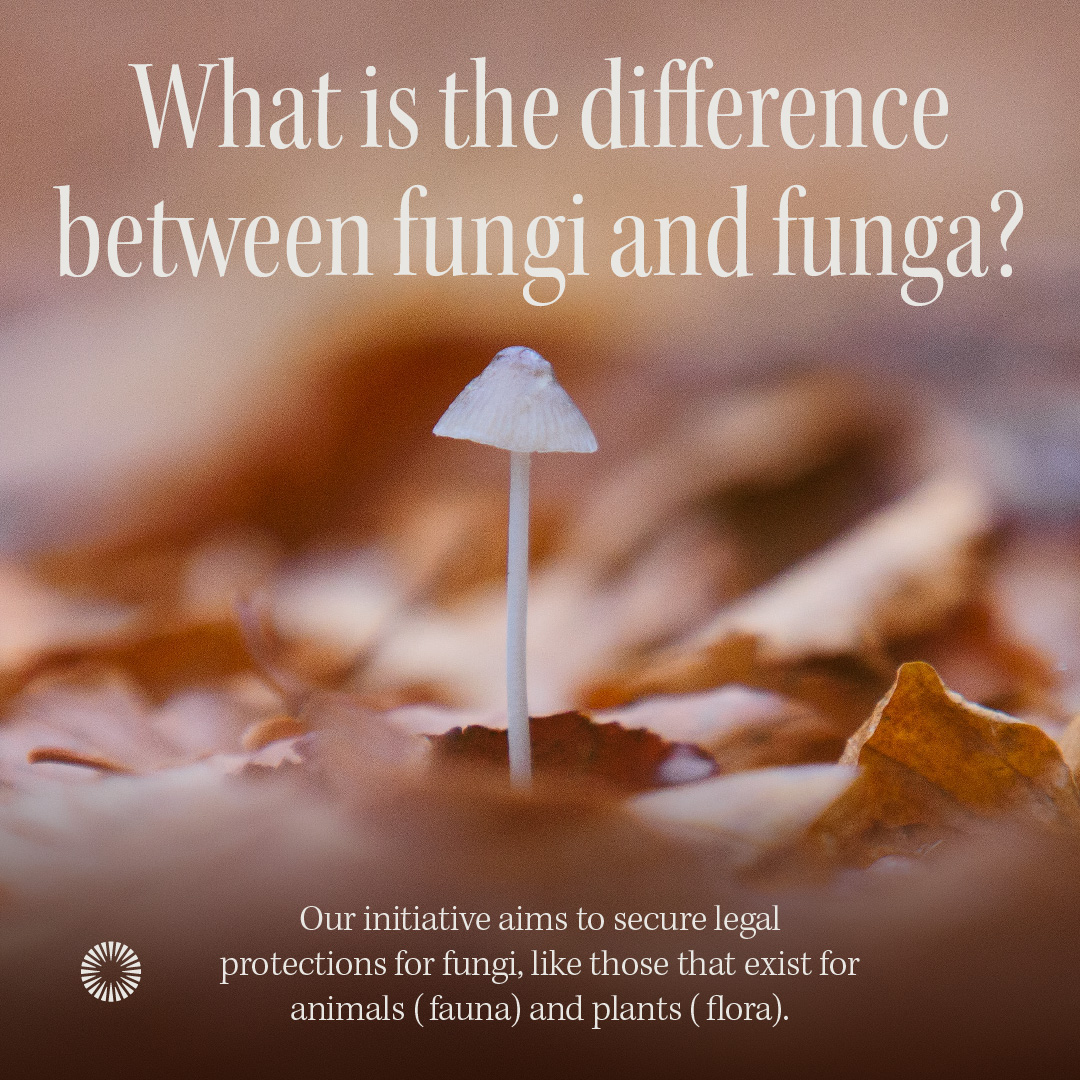
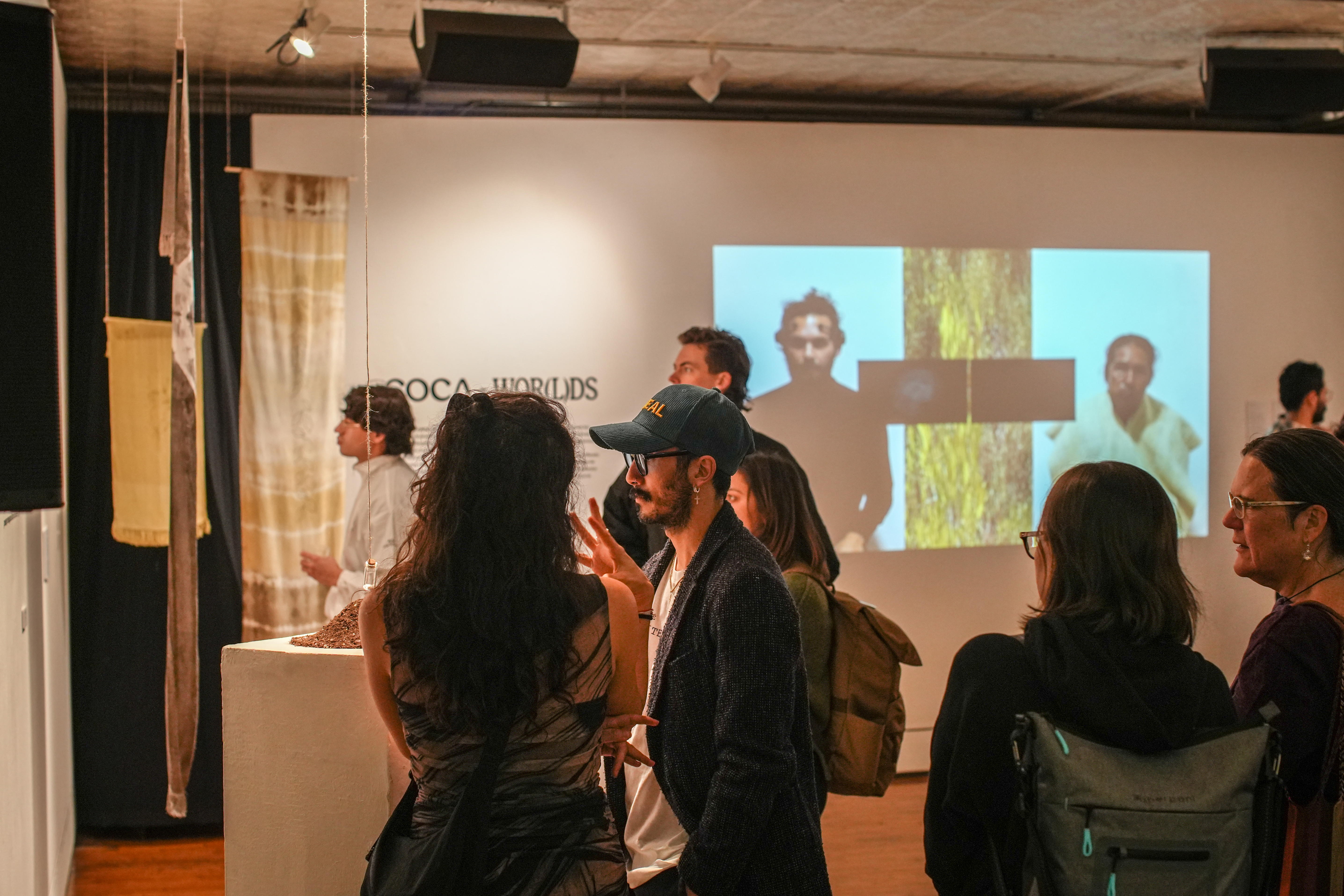

COCAWORLDS at Taller Boricua, Harlem NYC, March - May 2024. /Photos: Beto Paredes ︎︎︎
This curatorial research project seeks to highlight the coca plant's mystical, political, medicinal, and nutritional value through contemporary art.
COCAWORLDS
Curators: Liana, a curatorial research collective formed by Colombian artists and researchers Angélica Cuevas (Medellín, 1988), Juan Pablo Caicedo Torres (Bogotá, 1991) and Giselly Mejía (Támesis, 1990).
Artists: Tatiana Arocha, Pajarita Caucana (Daniela Rubio, Maria Alejandra Torres and Mónica Suárez), Aimema Uai, Sandra Díaz, Andrés Domínguez, Estefanía García Pineda, Miguel Ángel Rojas, Edinson Quiñones, Anyi Ballesteros (Agroarte), NOMASMETAFORAS (Julián Dupont and Clara Melniczuk) with Consejo de Mayores del Territorio Ancestral Kweth Kina & Consejo de Mayores UAIIN-CRIC, Ximena Garrido-Lecca, and Ricardo Cortés.
The project has been carried out with the contribution of researchers from the Colombia Studies Group in New York: Andrés Ávila, Natalia Mahecha, Melody Feo Sverko, Benjamín Garrido, Juan José Guzmán, María Fernanda Pulido, the designer Sebastián Páez, photographer Alejandro Jaramillo, and the Murui elder Emilio Fiagama Jainuama.
My role: Curator, researcher, educator, strategic communicator, and producer.
Language: Spanish and English.
![]()
Curators: Liana, a curatorial research collective formed by Colombian artists and researchers Angélica Cuevas (Medellín, 1988), Juan Pablo Caicedo Torres (Bogotá, 1991) and Giselly Mejía (Támesis, 1990).
Artists: Tatiana Arocha, Pajarita Caucana (Daniela Rubio, Maria Alejandra Torres and Mónica Suárez), Aimema Uai, Sandra Díaz, Andrés Domínguez, Estefanía García Pineda, Miguel Ángel Rojas, Edinson Quiñones, Anyi Ballesteros (Agroarte), NOMASMETAFORAS (Julián Dupont and Clara Melniczuk) with Consejo de Mayores del Territorio Ancestral Kweth Kina & Consejo de Mayores UAIIN-CRIC, Ximena Garrido-Lecca, and Ricardo Cortés.
The project has been carried out with the contribution of researchers from the Colombia Studies Group in New York: Andrés Ávila, Natalia Mahecha, Melody Feo Sverko, Benjamín Garrido, Juan José Guzmán, María Fernanda Pulido, the designer Sebastián Páez, photographer Alejandro Jaramillo, and the Murui elder Emilio Fiagama Jainuama.
My role: Curator, researcher, educator, strategic communicator, and producer.
Language: Spanish and English.

In 2023, we funded Liana Collective and developed COCAWORLDS to reshape narratives and envision possible futures for coca from New York.
The project brings together over 14 transdisciplinary artists, Indigenous authorities, and scholars who reframe coca as a plant of power, medicine, and food in the face of the extractive and punitive violence that has severely wounded its spirit, degraded its territory, and disrupted the lives of Indigenous and peasant communities in Latin America.
COCAWORLDS aims to expand and highlight the complexity of a plant that has been reduced to mere raw material for narcotic production through three central themes: Coca - The Plant, Coca Politics, and Coca Wor(l)ds.
Coca - The Plant examines the plant’s qualities and agency as a living entity, delving into its physical, chemical, and sensory attributes. The use of coca as food and medicine, along with its role as a creative tool, are key concerns of this section. Coca Politics scrutinizes and challenges the tensions arising from the exploitation of the coca leaf for cocaine production and the labeling of the plant as an 'enemy' in the context of the War on Drugs. Finally, Coca Wor(l)ds explores the cultural and spiritual facets associated with the coca plant, emphasizing the Indigenous knowledge systems and worldviews connected to its harvesting and everyday uses.
COCAWORLDS reveals a diverse array of geopolitical tensions, Indigenous healing practices, origin stories, prophetic abilities, cultural artifacts, and mystical connections between coca, language, nature, and divinity, all aimed at transforming narratives and speculating on the future of this sacred plant.
The project brings together over 14 transdisciplinary artists, Indigenous authorities, and scholars who reframe coca as a plant of power, medicine, and food in the face of the extractive and punitive violence that has severely wounded its spirit, degraded its territory, and disrupted the lives of Indigenous and peasant communities in Latin America.
COCAWORLDS aims to expand and highlight the complexity of a plant that has been reduced to mere raw material for narcotic production through three central themes: Coca - The Plant, Coca Politics, and Coca Wor(l)ds.
Coca - The Plant examines the plant’s qualities and agency as a living entity, delving into its physical, chemical, and sensory attributes. The use of coca as food and medicine, along with its role as a creative tool, are key concerns of this section. Coca Politics scrutinizes and challenges the tensions arising from the exploitation of the coca leaf for cocaine production and the labeling of the plant as an 'enemy' in the context of the War on Drugs. Finally, Coca Wor(l)ds explores the cultural and spiritual facets associated with the coca plant, emphasizing the Indigenous knowledge systems and worldviews connected to its harvesting and everyday uses.
COCAWORLDS reveals a diverse array of geopolitical tensions, Indigenous healing practices, origin stories, prophetic abilities, cultural artifacts, and mystical connections between coca, language, nature, and divinity, all aimed at transforming narratives and speculating on the future of this sacred plant.



March 1, 2024, in our inaugural exhibition in New York, Liana presented COCAWORLDS at Taller Boricua in Harlem and featured Colombian artists Edinson Quiñones (Popayán, 1982), Anyi Ballesteros (El Tambo, 1998) and the NOMASMETAFORAS collective formed by Julian Dupont (Popayán, 1985) and Clara Melniczuk (La Ciotat, 1991). Through photography, video, objects, and textiles, the artists propose three perspectives for healing historical and collective wounds surrounding the stigmatization of the coca plant.

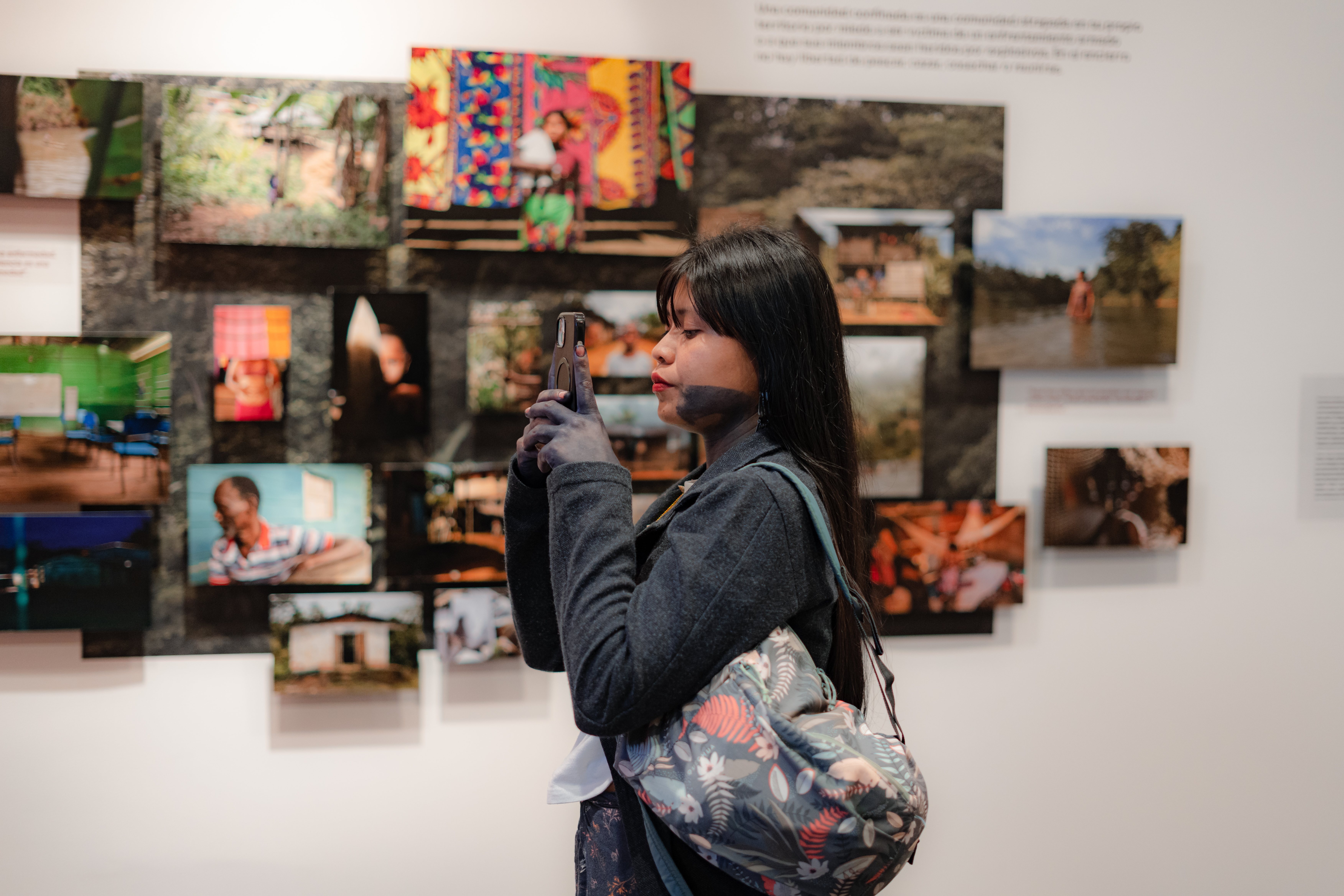

Riografias del Baudó, Artbo, Bogotá Colombia, September 2024. Photos: MSF ︎︎︎
Exploring themes of confinement, violence and resilience, Riografías del Baudó is a photographic exhibition highlighting the harsh realities indigenous and Afro-Colombian communities faced in Colombia's Chocó region. Through Fernanda Pineda's powerful photography, the exhibition aims to raise awareness of the crisis in the region and its traditional healing practices.
Riografías del Baudó. ¿Cómo se cura un territorio herido?
Curatorial team: Angélica Cuevas and Diana Rodríguez.
Client: Médicos Sin Fronteras (Doctors Without Borders) LATAM
Artist: Fernanda Pineda
Language: Spanish
![]()
Riografías del Baudó, a photographic project carried out in collaboration with the photographer Fernanda Pineda, documenting the situation of the Afro and Embera communities of Alto Baudó, was open to the public at Artbo and the García Márquez Cultural Centre in Bogotá in September and October 2024.
Curatorial team: Angélica Cuevas and Diana Rodríguez.
Client: Médicos Sin Fronteras (Doctors Without Borders) LATAM
Artist: Fernanda Pineda
Language: Spanish
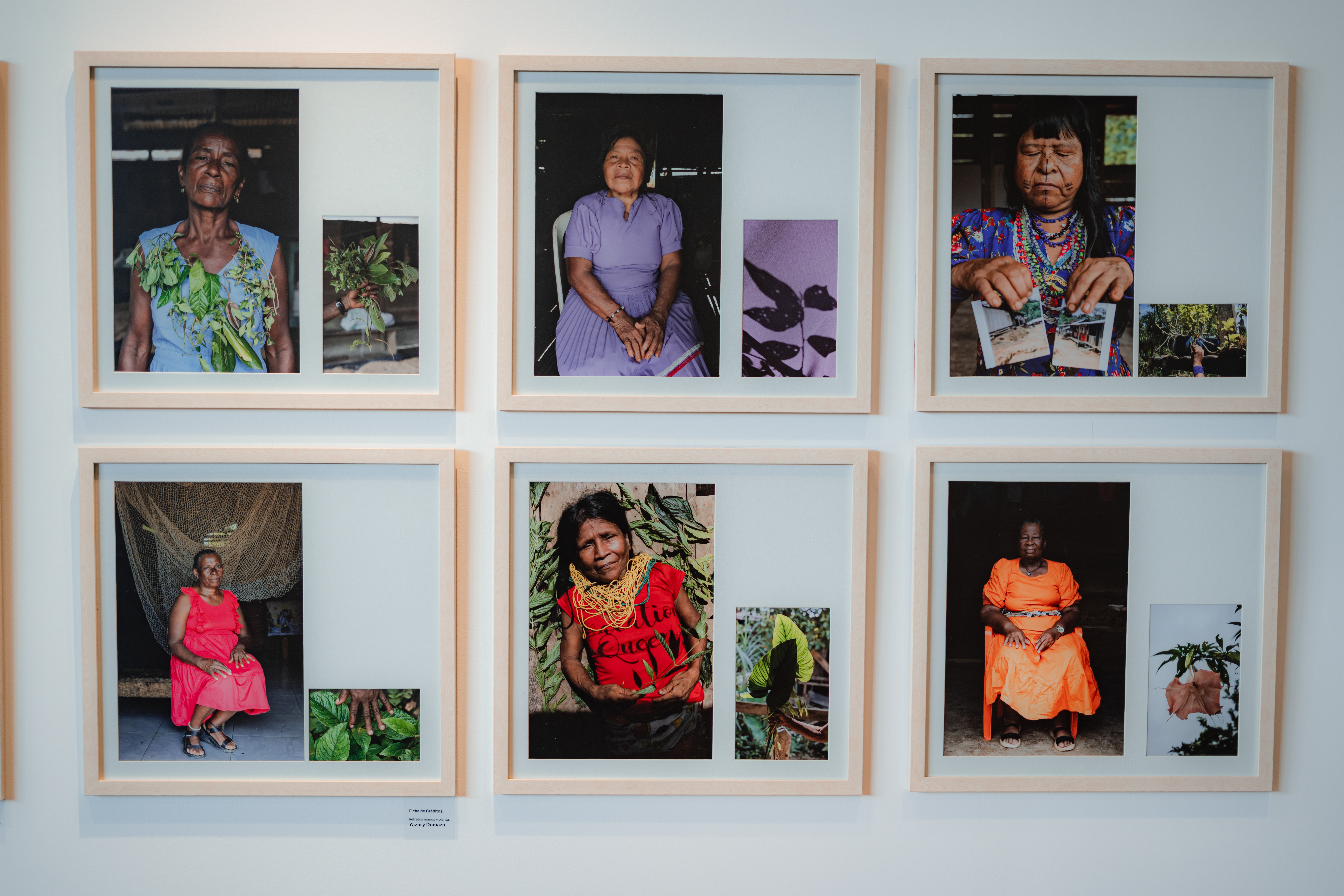
Riografías del Baudó, a photographic project carried out in collaboration with the photographer Fernanda Pineda, documenting the situation of the Afro and Embera communities of Alto Baudó, was open to the public at Artbo and the García Márquez Cultural Centre in Bogotá in September and October 2024.
In July 2024, Médicos Sin Fronteras (Doctors Without Borders) LATAM commissioned me to create a photographic exhibition that would communicate the reality faced by Indigenous and Afro-Colombian communities confined by the armed conflict in the Chocó region of Colombia.
For this project, I curated the images of photographer Fernanda Pineda and, together with museographer Diana Rodríguez, we collaborated on the conceptualization and design of the exhibition. I reviewed an archive of over 500 materials and developed the curatorial guidelines for the show. The exhibition opened in Bogotá in September during Artbo, Colombia's most important art fair, and was later presented at the García Márquez Cultural Center in downtown Bogotá.
The exhibition immersed visitors in the reality of the communities in Alto Baudó, where forced confinement, the presence of armed actors, and state abandonment had created humanitarian gaps and deep vulnerability for the Afro-descendant and Indigenous populations living in these territories. Through a poetic visual language, which included immersive elements that captured the audience's attention, the exhibition documented the landscapes of confinement and the region’s resilience practices. Riografías del Baudó sought to raise awareness among the Colombian and Latin American public about the violence that prevented these communities from living in peace and highlight the traditional healing practices in Alto Baudó. With Riografías del Baudó, Doctors Without Borders (MSF) brought the complex reality of life in remote and violent areas closer to Colombian and Latin American visitors, where MSF provided essential health care programs.
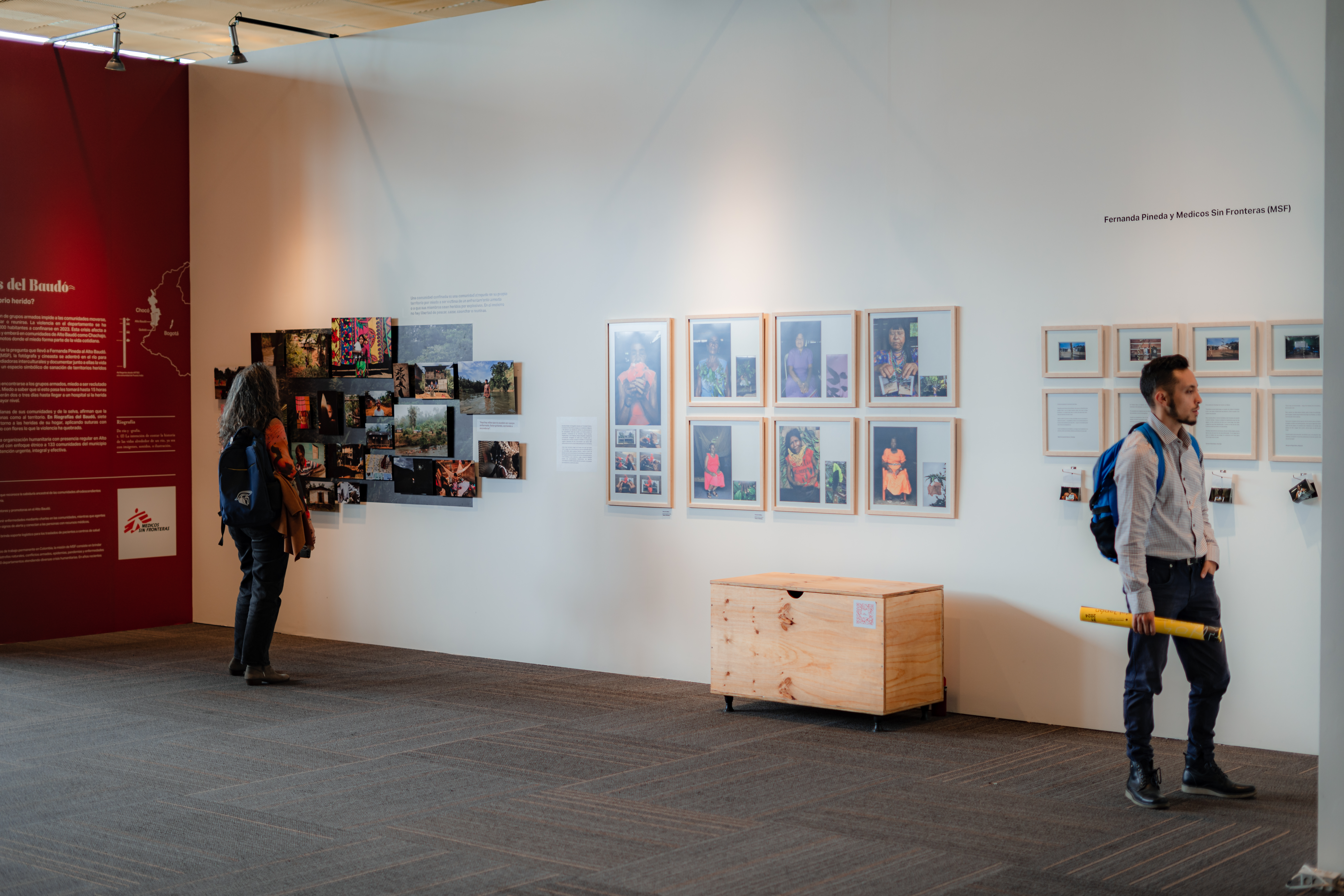
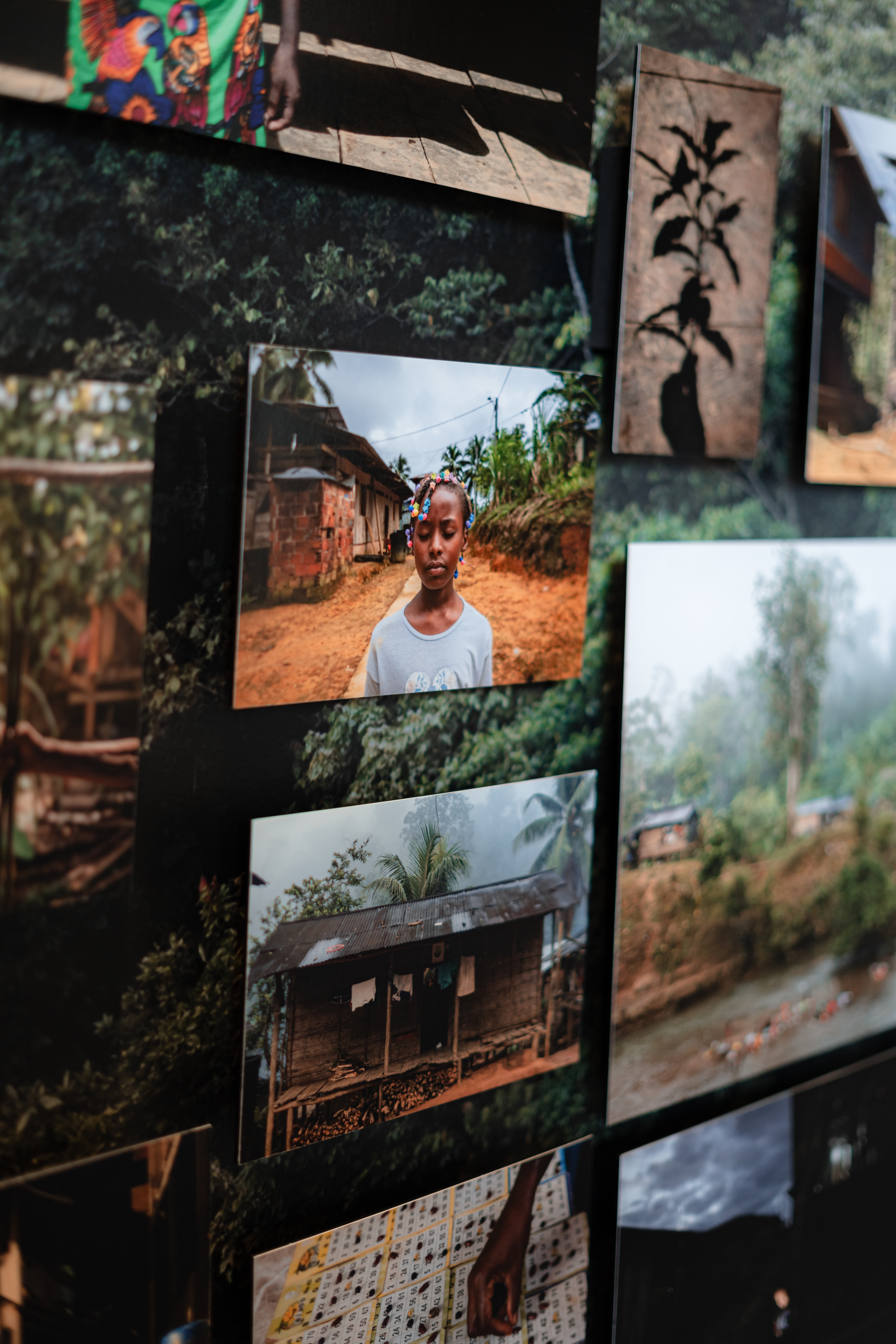
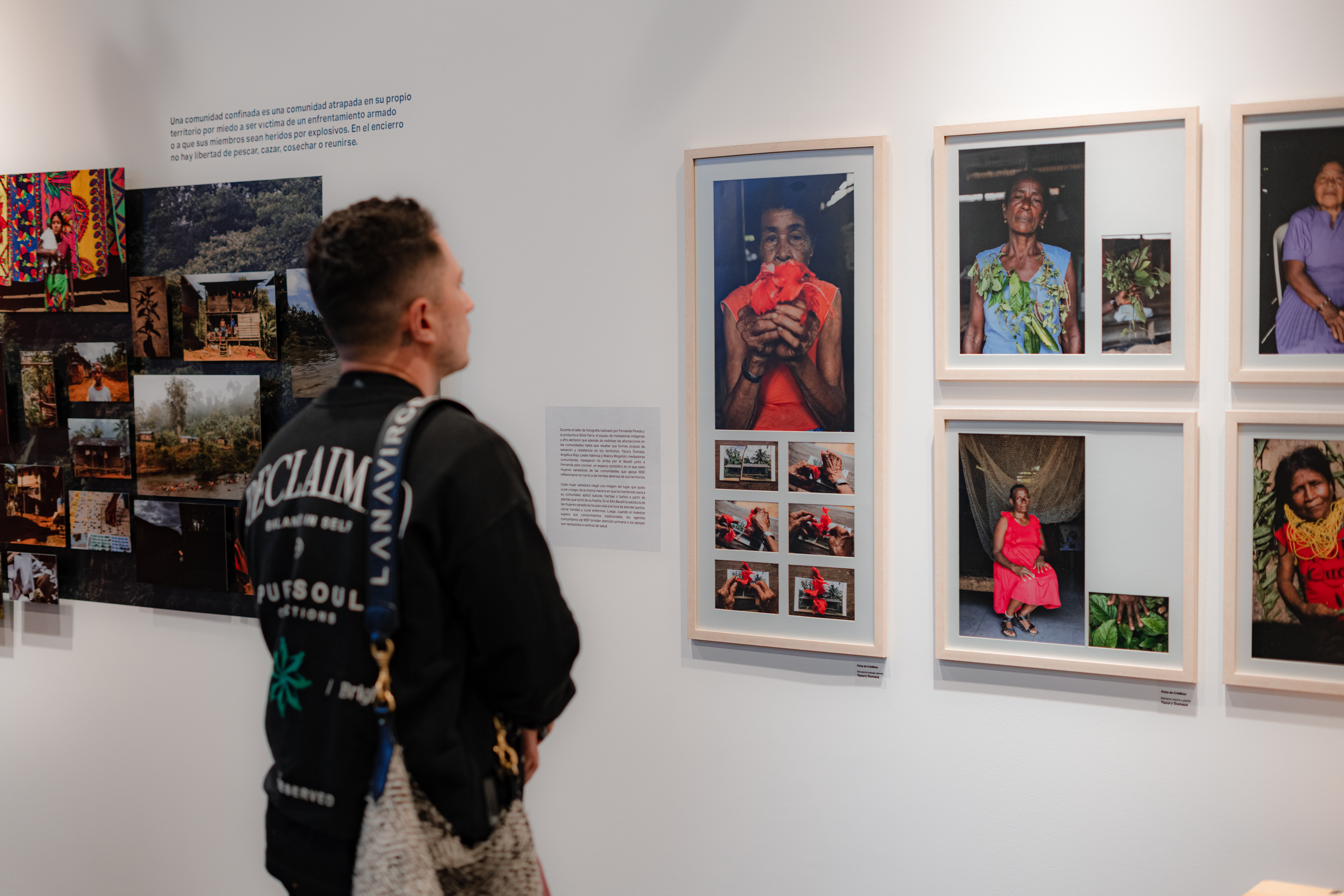
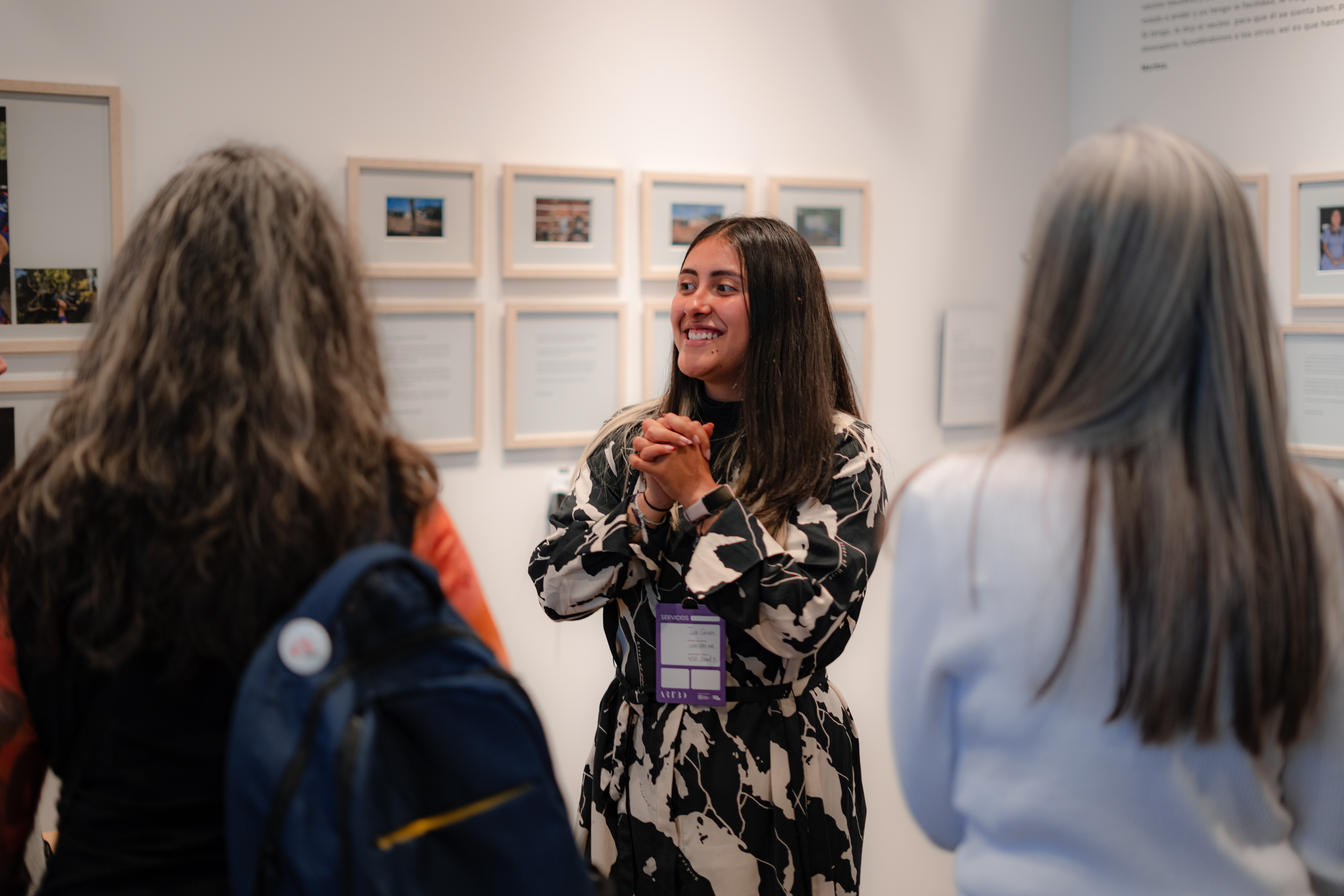
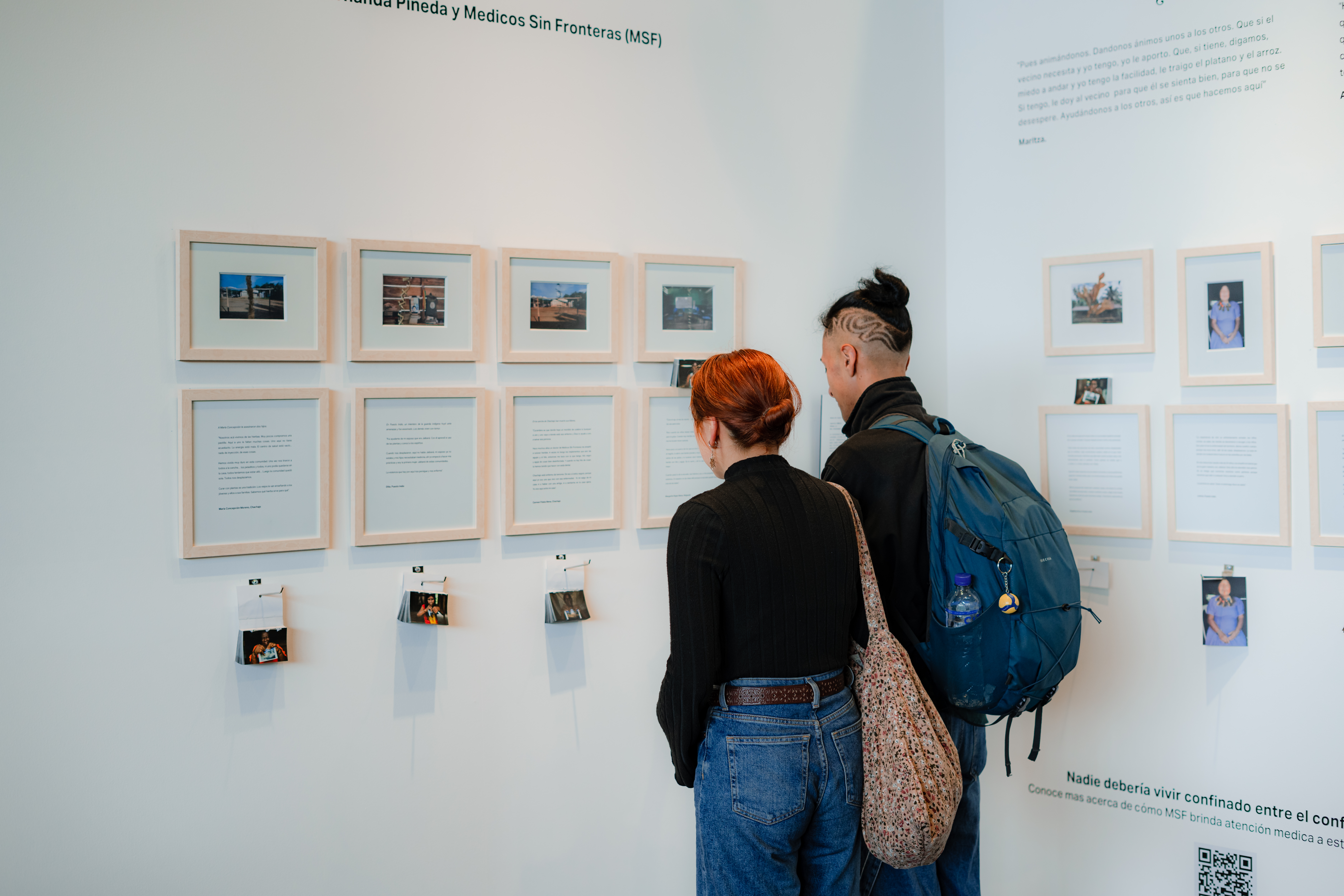
Riografias del Baudó, Artbo, Bogotá Colombia, September 2024. /Fotos: MSF